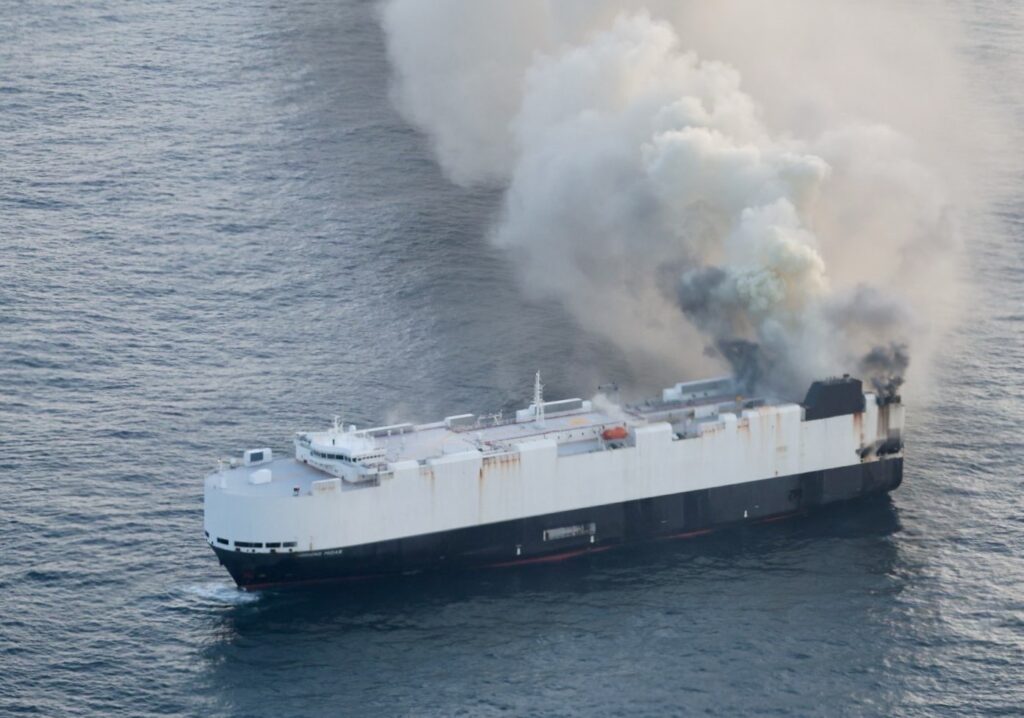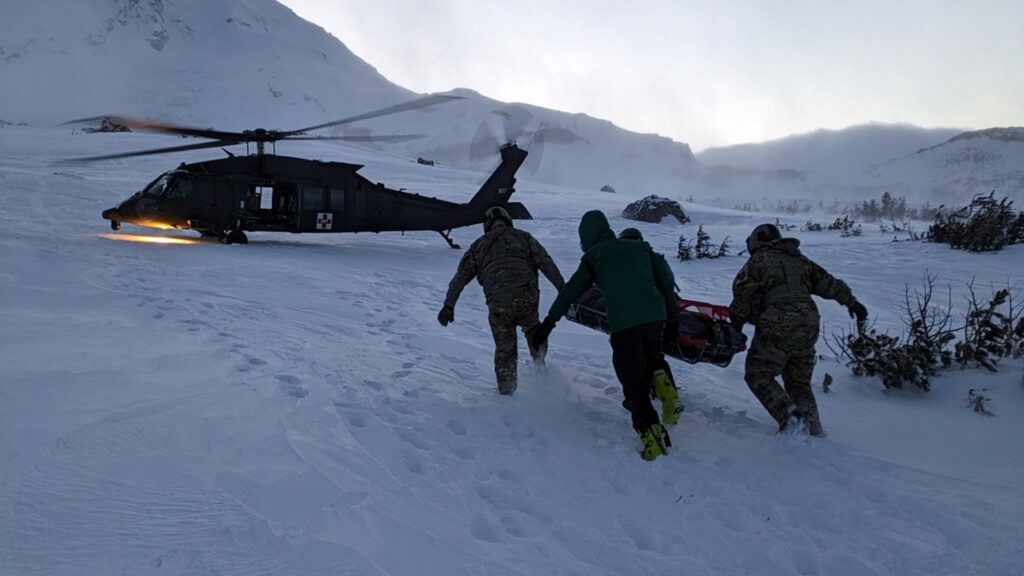This week’s SAR update spotlights a surge in high-impact rescue operations across land, maritime, and urban environments. From coordinated multi-agency responses to vessel emergencies at sea and mountain rescues in remote terrain, teams nationwide have demonstrated remarkable adaptability and collaboration.
Noteworthy advances in rescue technology, including expanded drone deployments and the integration of AI-driven risk assessment, are enhancing response times and operational safety. On the policy front, bipartisan efforts in Congress are intensifying calls for increased federal funding to support Urban Search & Rescue task forces, while states like Oregon are elevating public awareness and support for SAR volunteers. As the summer season brings heightened outdoor activity and disaster risks, this edition highlights the evolving landscape of search and rescue, underscoring the critical need for innovation, sustained investment, and community engagement.

Major Vessel Emergency Responses

The most substantial incident occurred on June 4, when the U.S. Coast Guard responded to a vessel fire aboard the cargo ship Morning Midas, a 600-foot U.K.-flagged vessel located approximately 300 miles south of Adak, Alaska. The ship, carrying 22 crew members and several thousand vehicles, including electric and hybrid models, experienced a fire that prompted immediate evacuation procedures (it reminded me of MV Cougar Ace case in 2006). Coast Guard watchstanders coordinated with three good Samaritan vessels, resulting in the successful rescue of all crew members by the motor vessel Cosco Hellas with no reported injuries. The incident highlighted the critical role of international maritime cooperation, as the Coast Guard worked closely with the vessel’s parent company, Zodiac Maritime, to coordinate recovery efforts while managing environmental concerns related to approximately 350 metric tons of gas fuel and 1,530 metric tons of very low sulfur fuel oil onboard.
International Maritime Coordination
A separate aviation-related maritime rescue occurred off the coast of Vero Beach, Florida, on June 2, when U.S. Customs and Border Protection’s Air and Marine Operations responded to a downed single-engine Cessna Skyhawk approximately 2-3 miles offshore. The multi-agency operation involved AMO crews, the U.S. Coast Guard, the Indian River County Sheriff’s Office, the Florida Fish and Wildlife Conservation Commission, and the Indian River Shores Police Department. Marine Interdiction Agents successfully located and rescued three survivors from the water, with the pilot being transferred to Coast Guard personnel for emergency medical evaluation. All survivors were then transported to Coast Guard Station Fort Pierce for further medical treatment.
Canadian maritime authorities demonstrated effective rescue coordination on June 7, when the Joint Rescue Coordination Centre (JRCC) – I assume JRCC Victoria, as it’s not mentioned in the article – successfully rescued two people and their sailboat, which had been caught in rough waters approximately two nautical miles off Active Pass near Galiano Island. The operation involved collaboration between a Canadian Coast Guard lifeboat and a Royal Air Force CH-149 Cormorant helicopter from Comox. Despite limited communication with the distressed sailboat, the Cormorant helicopter conducted an aerial search that successfully located the vessel, enabling the Coast Guard to secure a towline and bring the sailboat safely to shore.

High-Altitude Mountain Rescues
Mountain rescue operations during this period demonstrated the ongoing challenges faced by emergency responders in high-altitude environments. On June 4, Naval Air Station Whidbey Island’s search and rescue team assisted the Whatcom County Sheriff’s Office in rescuing two mountaineers stranded on the North Face of Mount Baker. The incident occurred when a 62-year-old climber lost a boot and crampon during an attempted summit, leaving both climbers unable to proceed safely. The rescue was expedited because the search and rescue team was already conducting an airborne training exercise, enabling them to reach the mountaineers within 20 minutes and transport them to PeaceHealth St. Joseph Medical Center.
And good ‘ol Arizona strikes again with rescue activity with an injured hiker requiring assistance on Mt. Elden Trail on June 7. Flagstaff Fire Department, Coconino County Sheriff’s Office Search and Rescue, and EMS units responded to reports of a woman who sustained injuries approximately one mile up the trail from the Mt. Elden ruins. The coordinated response involved providing on-site medical aid before assisting the hiker off the trail, emphasizing the importance of preparedness as summer hiking activities increase.
Desert and Recreational Area Rescues
The Lake Mead National Recreation Area conducted a rescue operation on June 5, when a 48-year-old hiker and his dog were successfully rescued following a multi-agency search effort.
The hiker had ventured into a remote area in search of another missing dog following a motor vehicle accident on May 28. After two search operational periods, park rangers located the man and his dog in a remote area and conducted a nighttime evacuation. The operation involved coordination among the Las Vegas Metropolitan Police Department, the Bureau of Land Management, the Bureau of Reclamation, the Nevada Department of Wildlife, and Red Rock Search and Rescue.
Hawaii’s challenging terrain continued to present rescue scenarios, with Kaua’i Fire Department personnel responding to multiple injured hikers on the Kalalau Trail on June 5. The operation involved rescuing a 42-year-old North Carolina visitor with apparent leg injuries, a wounded Oahu resident, and a 60-year-old Oahu resident suffering from exhaustion near Kalalau Beach. Air 1 helicopter transported all three individuals to Princeville Airport.

Drone Integration in Backcountry Operations
On Memorial Day (2025), Seattle Mountain Rescue successfully deployed drones to locate and extract stranded teenagers on Mount Si’s treacherous “Haystack” section near North Bend, Washington. The operation showcased the evolving capabilities of unmanned aerial systems in backcountry rescue scenarios, with the drone providing live video feeds to ground crews and enabling rapid assessment of the hikers’ positions on the 4,167-foot mountain.
Doug McCall, a volunteer with the Seattle Mountain Rescue team, emphasized the drone’s operational impact, noting that the mission allowed the team to launch directly from their North Bend headquarters and utilize thermal imaging capabilities to locate the stranded group just as the drone battery was reaching its return threshold. The successful operation highlighted how drones are becoming indispensable in search and rescue operations, particularly in rugged terrains where traditional methods can be slow and risky. Drone capabilities enable coverage of several miles within minutes, compared to conventional response times that can extend significantly in backcountry environments.
Artificial Intelligence and Risk Assessment Models
This was released in March 2025, but I only came across it this past week. If you’re interested in how AI is integrating into SAR, I recommend this read. The Hybrid Maritime Risk Assessment Model (HMRA), a publication of research on hybrid maritime risk assessment models that integrate automated machine learning and deep learning with hydrodynamic simulations, employs machine learning algorithms, including Light Gradient Boosting, XGBoost, Random Forest, and Multilayer Perceptron, to assess maritime accident probabilities and risks.
Applied to İzmit Bay in Turkey (מפרץ איזמיט (thank you Google), the model estimated average accident probabilities of 5.5 × 10⁻⁴ using automated machine learning-based Monte Carlo simulations, with probability ranges between 2.15 × 10⁻⁴ and 7.93 × 10⁻⁴. The research represents a significant advancement in predictive modeling for maritime safety, providing policymakers and stakeholders in marine spatial planning with decision-making tools while advocating for the strategic placement of emergency response centers in high-risk areas.
Satellite Technology Developments
NASA and the Indian Space Research Organisation announced their target launch date of June 2025 for the NISAR (NASA-ISRO Synthetic Aperture Radar) satellite mission. This first mission to carry both L-band and S-band radar capabilities will scan nearly all of Earth’s land and ice surfaces twice every 12 days, measuring changes in terrestrial ecosystems, ice sheet dynamics, and crustal deformation (ok, side note, this is pretty flippin’ awesome… especially if the data is openly available). The mission’s significance for search and rescue operations lies in its ability to provide continuous Earth observation capabilities that can support disaster response and environmental monitoring efforts critical to rescue planning and coordination.
Regional Drone Implementation Programs
Arizona’s Southern Arizona Rescue Association (SARA) demonstrated expanded drone capabilities in supporting Pima County Sheriff’s Department operations. The organization’s drone pilots operate aircraft with approximately 45 minutes of flight time, adhering to FAA regulations that include automated return-to-home capabilities and visual line-of-sight requirements. Recent deployments have shown significant psychological benefits for stranded individuals, with rescued parties reporting relief upon seeing drones approaching, confirming that rescue teams were en route. The program incorporates automated analysis of drone imagery using computer algorithms and software to accelerate the location of missing persons while simultaneously enhancing rescuer safety by reducing human exposure to hazardous terrain.

Federal Funding Initiatives for Urban Search and Rescue
A bipartisan coalition of over 40 members of Congress has renewed its campaign for increased federal funding to support the National Urban Search and Rescue Response System (US&R). They’re advocating for a $16 million increase to achieve total funding of $56 million for US&R operations in the Fiscal Year 2026 budget. This represents the second consecutive year of such advocacy, highlighting persistent funding challenges facing the 28 task forces strategically located across 19 states that comprise America’s US&R Response System.
State-Level Search and Rescue Legislation
The Public Land Search and Rescue Act was introduced in the 119th Congress on June 6 (no text of of posting this, however), establishing a comprehensive grant program to assist states with search and rescue operation costs on federal lands under the jurisdiction of the U.S. Department of the Interior and the U.S. Department of Agriculture. The legislation addresses the significant financial burden placed on rural counties with low populations but high visitation numbers, which frequently conduct remote search and rescue operations despite limited tax bases to cover associated costs. The program explicitly targets “remote search and rescue” activities that utilize, train, or support responders with specialized equipment to locate, assist, and remove individuals who are lost, injured, stranded, or entrapped in remote areas, as well as recover deceased individuals.
State Recognition and Awareness Programs

Oregon’s Governor officially proclaimed June as Search and Rescue Awareness Month, recognizing the dedication and lifesaving efforts of SAR personnel and volunteers across the state. The proclamation highlights the invaluable contributions of SAR teams while reinforcing the need for public awareness and support of their work during peak tourist season. The Oregon Department of Emergency Management coordinates air support and mutual aid resources during search and rescue efforts. The primary funding for these missions comes from local communities and the Oregon Search and Rescue Fund, which the Oregon State Sheriffs’ Association manages.
The Oregon SAR system comprises over 1,700 dedicated volunteers who respond to more than 1,000 missions annually. Community support is primarily channeled through the purchase of Oregon SAR cards, which help fund training and equipment for search and rescue teams statewide.
